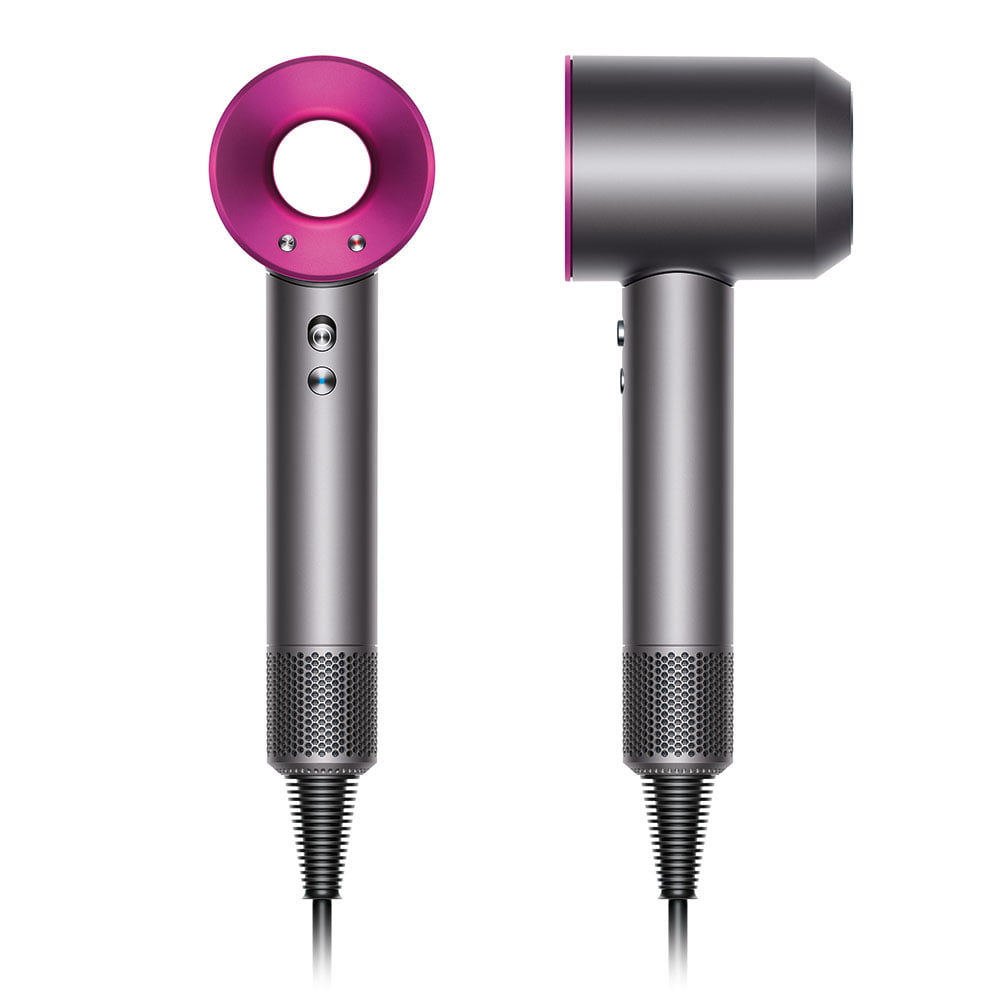Dyson Supersonic Hair Dryer | Iron/Fuchsia | Refurbished
Adjustable Heat Settings. Diffuser. Helps prevent extreme heat damage to protect natural shine. Ultra Fast Drying. Engineered for balance. Magnetic attachments. Controlled by just four buttons.
- Adjustable Heat Settings
- Diffuser
- Helps prevent extreme heat damage to protect natural shine
- Ultra Fast Drying
- Engineered for balance
- Magnetic attachments
- Controlled by just four buttons
- Dyson Smoothing Nozzle
- Dyson Styling Concentrator
- Dyson Diffuser
Additional information
| Manufacturer Part Number | 306002-02 |
|---|---|
| Assembled Product Dimensions (L x W x H) | 3.10 x 3.80 x 9.60 Inches |
Dyson may refer to:
- Dyson (surname), people with the surname Dyson
- Dyson (company), a Singaporean multinational home appliances company founded by James Dyson
- Dyson (crater), a crater on the Moon
- Dyson (operating system), a Unix general-purpose operating system derived from Debian using the illumos kernel, libc, and SMF init system
- Dyson sphere, a hypothetical megastructure that completely encompasses a star and captures most or all of its power output
- Dyson tree, a hypothetical plant suggested by physicist Freeman Dyson
- Eufloria (formerly called Dyson), a video game based on the idea of Dyson trees
- USS Dyson (DD-572), a United States Navy destroyer in commission from 1942 to 1947
- NOAAS Oscar Dyson (R 224), an American fisheries and oceanographic research ship in commission in the National Oceanic and Atmospheric Administration since 2005
- Dysons, an Australian bus operator
- Dyson, a character in the Canadian television series Lost Girl
- The Charles H. Dyson School of Applied Economics and Management, often referred to as "Dyson"
Fuchsia ( FEW-shə) is a genus of flowering plants that consists mostly of shrubs or small trees.
Almost 110 species of Fuchsia are recognized; the vast majority are native to South America, but a few occur north through Central America to Mexico, and also several from New Zealand to Tahiti. One species, F. magellanica, extends as far as the southern tip of South America, occurring on Tierra del Fuego in the cool temperate zone, but the majority are tropical or subtropical.
Hair is a protein filament that grows from follicles found in the dermis. Hair is one of the defining characteristics of mammals. The human body, apart from areas of glabrous skin, is covered in follicles which produce thick terminal and fine vellus hair. Most common interest in hair is focused on hair growth, hair types, and hair care, but hair is also an important biomaterial primarily composed of protein, notably alpha-keratin.
Attitudes towards different forms of hair, such as hairstyles and hair removal, vary widely across different cultures and historical periods, but it is often used to indicate a person's personal beliefs or social position, such as their age, gender, or religion.
Iron is a chemical element; it has symbol Fe (from Latin ferrum 'iron') and atomic number 26. It is a metal that belongs to the first transition series and group 8 of the periodic table. It is, by mass, the most common element on Earth, forming much of Earth's outer and inner core. It is the fourth most common element in the Earth's crust, being mainly deposited by meteorites in its metallic state.
Extracting usable metal from iron ores requires kilns or furnaces capable of reaching 1,500 °C (2,730 °F), about 500 °C (932 °F) higher than that required to smelt copper. Humans started to master that process in Eurasia during the 2nd millennium BC and the use of iron tools and weapons began to displace copper alloys – in some regions, only around 1200 BC. That event is considered the transition from the Bronze Age to the Iron Age. In the modern world, iron alloys, such as steel, stainless steel, cast iron and special steels, are by far the most common industrial metals, due to their mechanical properties and low cost. The iron and steel industry is thus very important economically, and iron is the cheapest metal, with a price of a few dollars per kilogram or pound.
Pristine and smooth pure iron surfaces are a mirror-like silvery-gray. Iron reacts readily with oxygen and water to produce brown-to-black hydrated iron oxides, commonly known as rust. Unlike the oxides of some other metals that form passivating layers, rust occupies more volume than the metal and thus flakes off, exposing more fresh surfaces for corrosion. Chemically, the most common oxidation states of iron are iron(II) and iron(III). Iron shares many properties of other transition metals, including the other group 8 elements, ruthenium and osmium. Iron forms compounds in a wide range of oxidation states, −4 to +7. Iron also forms many coordination compounds; some of them, such as ferrocene, ferrioxalate, and Prussian blue have substantial industrial, medical, or research applications.
The body of an adult human contains about 4 grams (0.005% body weight) of iron, mostly in hemoglobin and myoglobin. These two proteins play essential roles in oxygen transport by blood and oxygen storage in muscles. To maintain the necessary levels, human iron metabolism requires a minimum of iron in the diet. Iron is also the metal at the active site of many important redox enzymes dealing with cellular respiration and oxidation and reduction in plants and animals.






Reviews
There are no reviews yet.